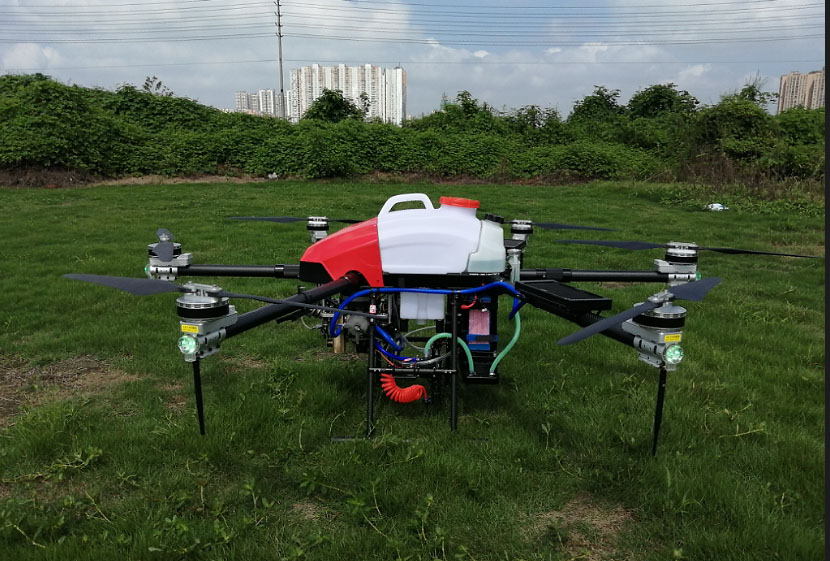UK government is considering the feasibility of a full liberalisation of crop spraying drone
 FlyDragon 4R 16L crop spraying drone
FlyDragon 4R 16L crop spraying drone
DRONES could deliver precise and targeted doses of agri-chemicals to crops, vastly reducing the overall amount of chemicals used. but in the UK does not allow use crop spraying drone for agriculture spraying, although there is a derogation available through the Health and Safety Executive.
As things stand, crop spraying is governed by rules designed around boom sprayers, and currently forbids aerial spraying because of the high risk of chemical drift.
Discussing the concept in a recent webinar, a panel of sector experts noted that drones were already being used for surveying, mapping, crop monitoring and disease detection, and employing them to apply actual crop treatments was an obvious opportunity for the sector.
“Precision technology can tackle key agricultural challenges – using variable rate and precise application can reduce spray use and improve yields,” explained Hannah Tew, ecosystem director at Connected Places Catapult, the British government's innovation agency for autonomous vehicles
Bryn Bircher, policy officer at HSE, acknowledged that drone technology was advancing all the time: “We’re heading into the fourth agricultural revolution and things are changing rapidly, but chemicals will still be around for a while.

FlyDragon hybrid 16L spot crop spraying drone for Malaysian Oil Palm
Regulatory challenges aside, the HSE is now working alongside the Civil Aviation Authority (CAA) to establish what can be done to make drone operations safe. “It is possible to apply for a permit, which will be unique to each business,” said Mr Bircher. “We want to support new tech and I hope we can do so, with the existing legislation.”
Were they to be made legal, sprayer drones have been claimed to offer an 'impressive' time saving. “A drone with a 20-litre tank can cover 15 hectares an hour,” said Robert Pearson at Auto Spray Solutions.
Jack Wrangham at Drone Ag stressed that drones would not replace conventional systems, but supplement them. “People will only use the drone if it’s better for the job than the conventional way."
But it is not just spraying that drones could be useful for – they could be used for mapping, applying solid fertiliser, seeds and slug pellets. “Farmers could get field reports in minutes, just from flying a drone across the field – close up imagery can be used for crop uniformity and accessing the severity of weed patches,” said Mr Wrangham. “This could inform variable rate applications, so chemicals are only applied where necessary.”
 FlyDragon 4R 16L crop spraying drone
FlyDragon 4R 16L crop spraying drone FlyDragon hybrid 16L spot crop spraying drone for Malaysian Oil Palm
FlyDragon hybrid 16L spot crop spraying drone for Malaysian Oil Palm